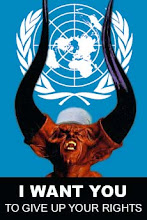Comet Holmes was first spotted in 1892 when it underwent a similar, though much less dramatic, brightening, but it has been steadily decreasing in ...
The night sky for December
by Mitch Battros - Earth Changes Media

Explosive news was disclosed during my November 29th interview with NASA scientist Carey Lisse, co- investigator of the Hubble Comet 17P/Holmes observing team.
Dr. Carey Lisse, a member of the NASA Deep Impact Mission science team, a Senior Research Scientist in the Space Department, Johns Hopkins Applied Physics Laboratory. His current research areas are the physical properties of primitive solar system objects, dust in comets, the IPD cloud, the Proto-Solar Nebula, YSOs X-ray emission from solar system bodies---heliospher e, and solar system spacecraft missions.'
Never before explanations were disclosed during our discussion as to what caused comet 17P/Holmes unusual and unexpected "outburst". Dr. Lisse says: "17P/Holmes is very unusual. In fact I have never seen anything like this in my 20 years as (NASA) solar physicist and senior research scientist."
One of the two main possibilities as to the cause of comet Holmes sudden and unusual outburst is that an asteroid collided with comet Holmes causing dust particles to expand to the size of our Sun. This explosion was so profound, it expanded by a factor of 1,000,000,000 (1 million). Although this is extremely fascinating, it was the second possible cause that had me sitting straight up in my chair.
The second possible cause of this "extraordinary event" says Lisse, "is comet 17P/Holmes was hit by charged particles (solar winds) setting off an electrical/magnetic discharge. This source of this solar wave could have been a GRB (gamma ray burst)."
"Some of my senior colleagues at "Chandra" believe it may have been picked up by the Chandra telescope on or around October 28th. This is an ongoing investigation and may take one year to gather all the analysis to determine all the factors for this event" says Dr. Lisse.
But there is still more to this story----I asked Dr. Lisse if comet 17P/Holmes had been in the skies before. Lisse: "We know comet Holmes is a seasonal effect. It is cyclical with its last showing in 1892. What we have found in our database tells us the 1892 comet Holmes event had a similar outburst which was just slightly smaller than the current event measuring at approximately Mag. 3. The one which just occurred was Mag. 2.5 which is a bit larger."
I asked Dr. Lisse if it is possible that what is known as the "Star of Bethlehem" could have been comet Holmes, or one like it. Well he did indeed have something to say about this, and his answer may be quite the surprise to many of you.
There is more----a lot more of what Dr. Lisse exclusively disclosed to ECM, and it has all been captured on audio.
**This full interview is now available on the ECM "Recent Audio Files":
Click Here to Listen
Website: http://www.nasa.gov/mission_pages/hubble/news/hubble-holmes.html
================================================================

No comments:
Post a Comment